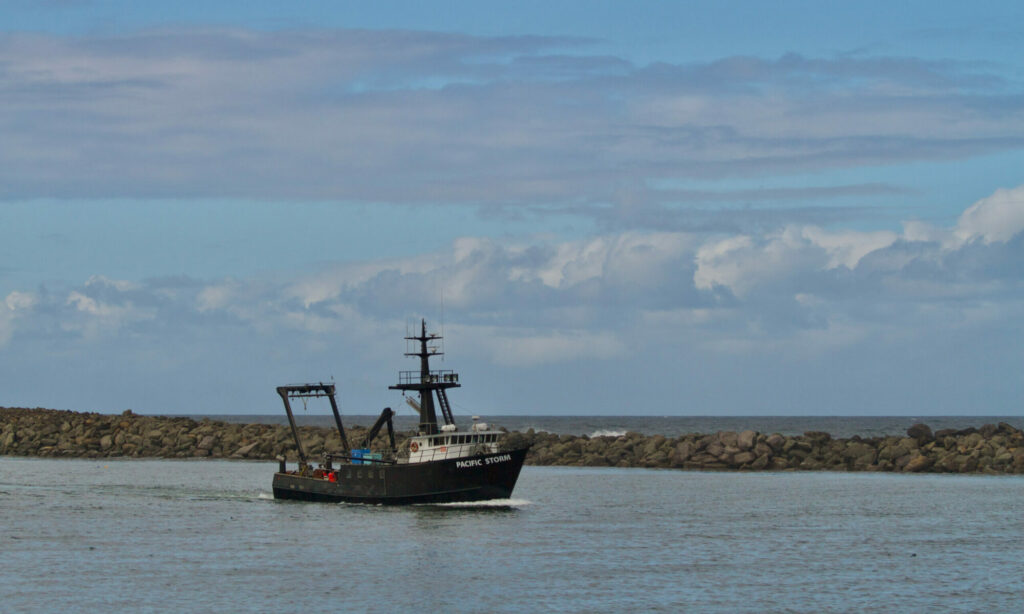
The Holistic Assessment of Living marine resources off Oregon (HALO) project headed out on its first voyage in October 2021 aboard the R/V Pacific Storm. Researchers conducted visual surveys for cetaceans (whales and dolphins) along the Newport Hydrographic (NH) Line and deployed three Rockhopper recording units that will stay put for 6 months to continually collect sound information, listening for cetaceans nearby. Following this initial voyage, the HALO team will revisit the NH line on a 24-hour trip every three months and repeat the visual survey.
The goals of our project are (a) to improve our understanding of the interactions between the oceanographic conditions (e.g., ocean temperature) and the occurrence patterns of marine mammals in this area, and (b) to assess how global climate change may impact these interactions and patterns.
The Newport Hydrographic (NH) Line

Ever since the 1960s, researchers have conducted oceanographic studies in Oregon waters along the Newport Hydrographic (NH) Line, which was established for to collect long-term data to assess patterns and changes. The NH line has generated a strong oceanographic understanding of the area, yet a significant gap in knowledge of cetacean distribution in Oregon waters remains. We will join the legacy of other NH Line researchers through systematic visual and acoustic surveys along the NH Line to generate long-term data on cetacean occurrence patterns. We deployed three Rockhopper units at NH65, NH45, and NH25 (pink triangles) and the black line is visually surveyed for cetaceans quarterly.
